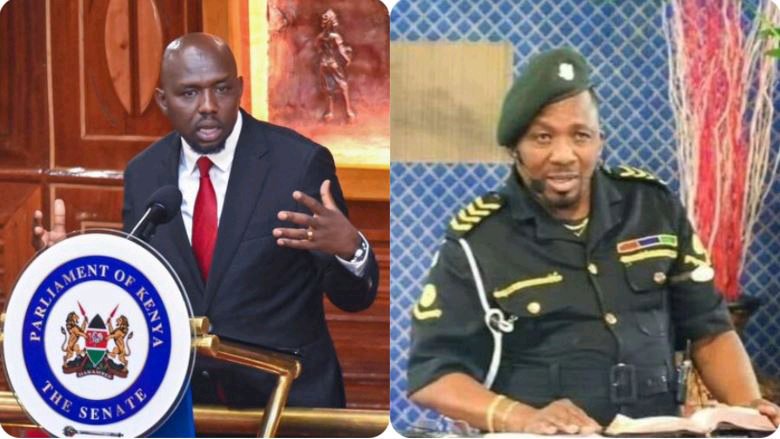When a blogger from Kiambu County began recording videos outside public hospitals, few thought her words would travel beyond her social media feed. Yet in a matter of weeks, Virginia, as she’s simply known online, had thrown Kenya’s healthcare conversation into disarray — part activism, part outrage, and part heartbreak.
Her videos were raw. Patients seated on floors. Relatives pleading for help. And doctors, when they could, explaining that they too were victims of a broken system. Virginia’s voice trembled but never softened.
“We keep losing people not because doctors don’t care,” she said in one of her widely shared clips, “but because the system makes caring impossible.”
Virginia’s message resonated at a time when doctors across the country had downed their tools in protest. In counties like Kiambu, hospitals became a mirror of the national crisis, showing empty wards, unpaid staff, and communities forced to seek treatment in private clinics they could barely afford.
The Blogger Who Spoke When Leaders Stayed Silent
Virginia does not belong to any political camp, nor is she an activist backed by donors or NGOs. She describes herself as “just a daughter of this soil who got tired of watching people die quietly.”
“If you walk into some hospitals here, you’ll understand that sickness is not the only thing killing people,” she told her followers in a live stream viewed thousands of times. “It’s the waiting, the fear, and the feeling that no one in power cares.”
Her posts, though informal, forced accountability. County health officers were compelled to issue statements, some accusing her of exaggeration. But ordinary Kenyans saw truth in her footage, the long queues, the power outages mid-surgery, and the caregivers paying for gloves and medicine out of pocket.
The Strike and the System Beneath It
The ongoing doctors’ strike has laid bare decades of neglect in Kenya’s health system. At its core, the dispute stems from unfulfilled promises — the 2017 Collective Bargaining Agreement, unpaid internships, and poor working conditions.
“People think the strike is just about salaries,” Virginia noted in one of her videos. “But ask a doctor in Kiambu how it feels to lose a patient because a blood bag or oxygen cylinder didn’t arrive. That’s not about pay — that’s about dignity.”
Her framing was unusual for a blogger, sympathetic to both patients and medical workers. In her view, both sides were casualties of a system where bureaucracy suffocates compassion.
Health policy analysts agree. The Council of Governors has repeatedly blamed underfunding and delayed disbursements, while the national government insists counties must manage their allocations better. In between, the public watches promises turn to press releases and then to silence.
When Tragedy Strikes, Accountability Falters
The crisis deepened after the shocking death of a 38-year-old Kiambu politician, gunned down in what many saw as a reflection of growing insecurity and mistrust in institutions.
Virginia’s reaction to the killing went viral not because she politicised it, but because she humanised it.
“He died with people watching, calling for help that never came,” she said, visibly shaken. “We can’t keep pretending this country values life when even the powerful die waiting for an ambulance.”
That quote struck a nerve. It was shared widely, forcing the county to defend its emergency response systems. Within days, a probe was ordered into ambulance dispatch delays and the capacity of local hospitals to respond to trauma cases.
Virginia’s videos became less about exposing individual failures and more about exposing the pattern, one where every tragedy fades before reforms can begin.
Hospitals in the Spotlight
Virginia’s footage from Kiambu Level 5 Hospital and nearby sub-county facilities revealed structural rot: worn-out equipment, exhausted medics, and families crowding casualty rooms. She pointed out that some facilities went weeks without essential supplies, forcing staff to improvise.
“You see doctors with their own money buying gloves just to treat patients,” she told a local YouTube interviewer. “Then the county officials stand before cameras and call it ‘service delivery’. That’s not service, that’s survival.”
Her commentaries reignited debate about whether devolution had truly brought services closer to the people. Many residents echoed her frustrations, saying county hospitals were underfunded while administrative budgets kept rising.
Experts say Virginia’s impact lies not in official reports, but in the immediacy of her storytelling. In a society fatigued by policy talk, her camera became the conscience of a country.
What Her Voice Has Achieved
Though controversial, Virginia’s activism has already spurred tangible results. Some hospitals have begun publishing weekly inventory updates and patient turnaround times. Health officials have started engaging with local bloggers and community groups to counter misinformation with verified data.
Still, Virginia remains cautious.
“If we stop talking when they fix one thing, they’ll go back to ignoring us,” she said recently. “Accountability should not depend on who is trending.”
Her stance reflects a new generation of citizen journalists who refuse to wait for permission to question authority. Their tools are simple, smartphones and persistence, but their impact is undeniable.
A Nation at a Crossroads
Kenya’s healthcare debate now sits at a crossroads. The doctors’ strike may end eventually, but the system’s underlying sickness will remain unless leaders confront its moral failure.
As Virginia put it:
“We’ve built hospitals with no heart. Buildings don’t save people, people do. Until we fix the system that breaks those people, no one is safe, not even the ones in power.”
Her words echo far beyond Kiambu. They capture a national truth: a health system that leaves both patients and doctors feeling helpless is not merely inefficient, it is unjust.



